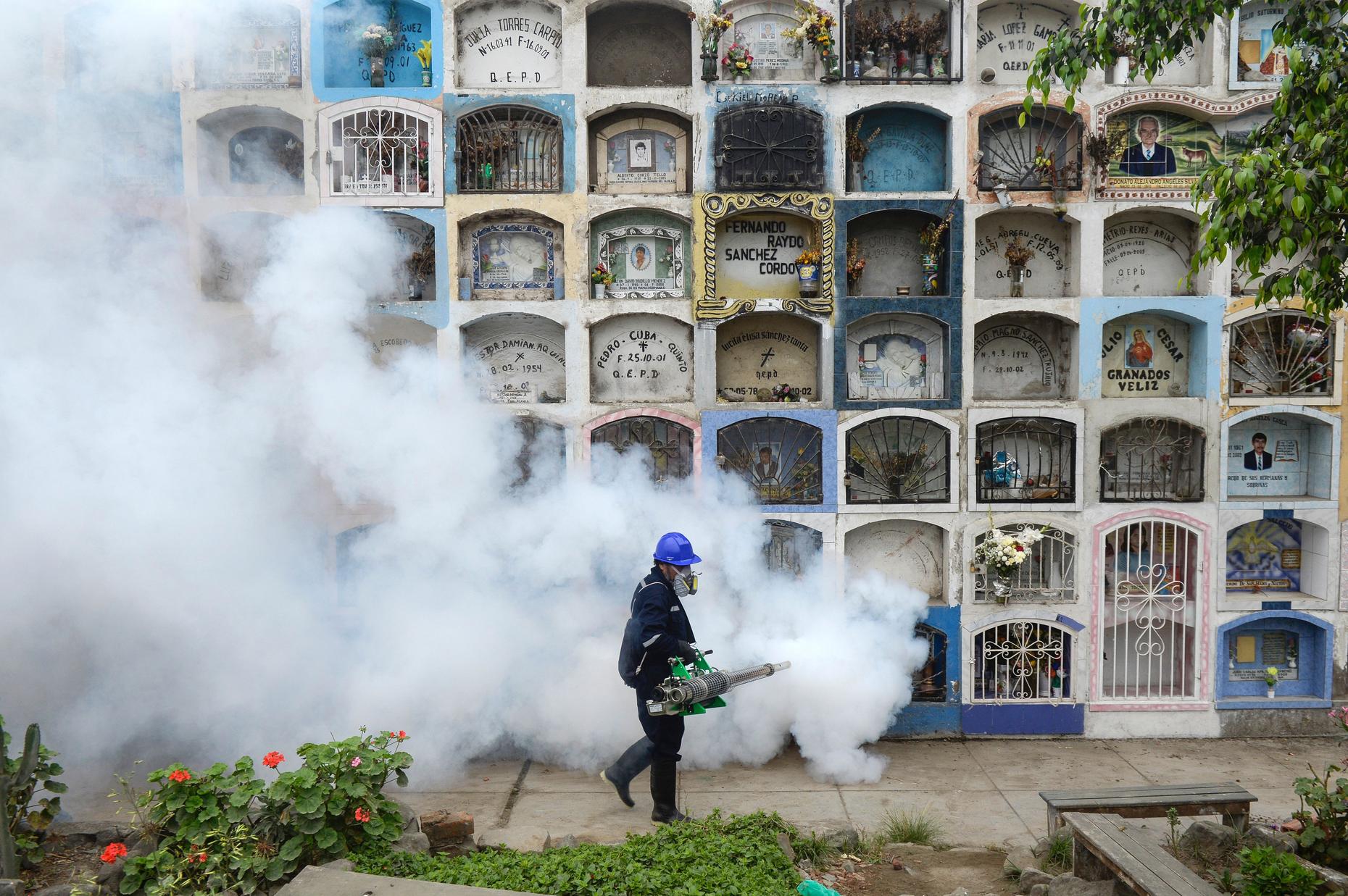Under what circumstances and conditions does a mosquito-born disease initiate and latch on in an affected region? It has to be brought to the region from somewhere. This is often the case with infectious diseases, and they spread like wildfire in new areas where the local population does not have the immunity, drugs or infrastructure in place to cope with it.
 |
| Workers wait before spraying insecticide aimed at preventing the spread of Aedes aegypti mosquito. |

Zika, became a crisis in Brazil in early 2015. The first cases are thought to have come to country through traveling individuals. Genetic analysis of the strains from cases in Brazil were found to be similar to those from outbreaks in Pacific Island nations. One possibility is that an individual carrying it came from Chile, as exposure to the disease was found in a returning individual on vacation from Easter Island. Another possibility is that the virus was introduced in Rio de Janeiro following a canoe race, in which competitors from Pacific Islands were present.
In Sub-Saharan Africa, for example, where malaria has long since taken hold, these factors describe the affected regions perfectly. They lay a solid foundation on which diseases can build a rampant and lasting presence. For regions of the world where malaria is endemic, the presence and alignment of the layers is glaringly obvious. This raises concern for parts of the world that may be extremely susceptible to the spread of current diseases or to the introduction of new diseases that could take over in a short span of time. Scientists are looking for trends in areas hit the hardest by mosquito-borne diseases in order to create solutions to existing problems and hopefully prevent crisis in the future.
The following excerpt is from an article detailing the multi-level array of factors that contribute to the ideal environment in which mosquito-borne diseases like malaria thrive. For the whole article by Dr. Vittor from the University of Florida School of Medicine, click here.
The following excerpt is from an article detailing the multi-level array of factors that contribute to the ideal environment in which mosquito-borne diseases like malaria thrive. For the whole article by Dr. Vittor from the University of Florida School of Medicine, click here.